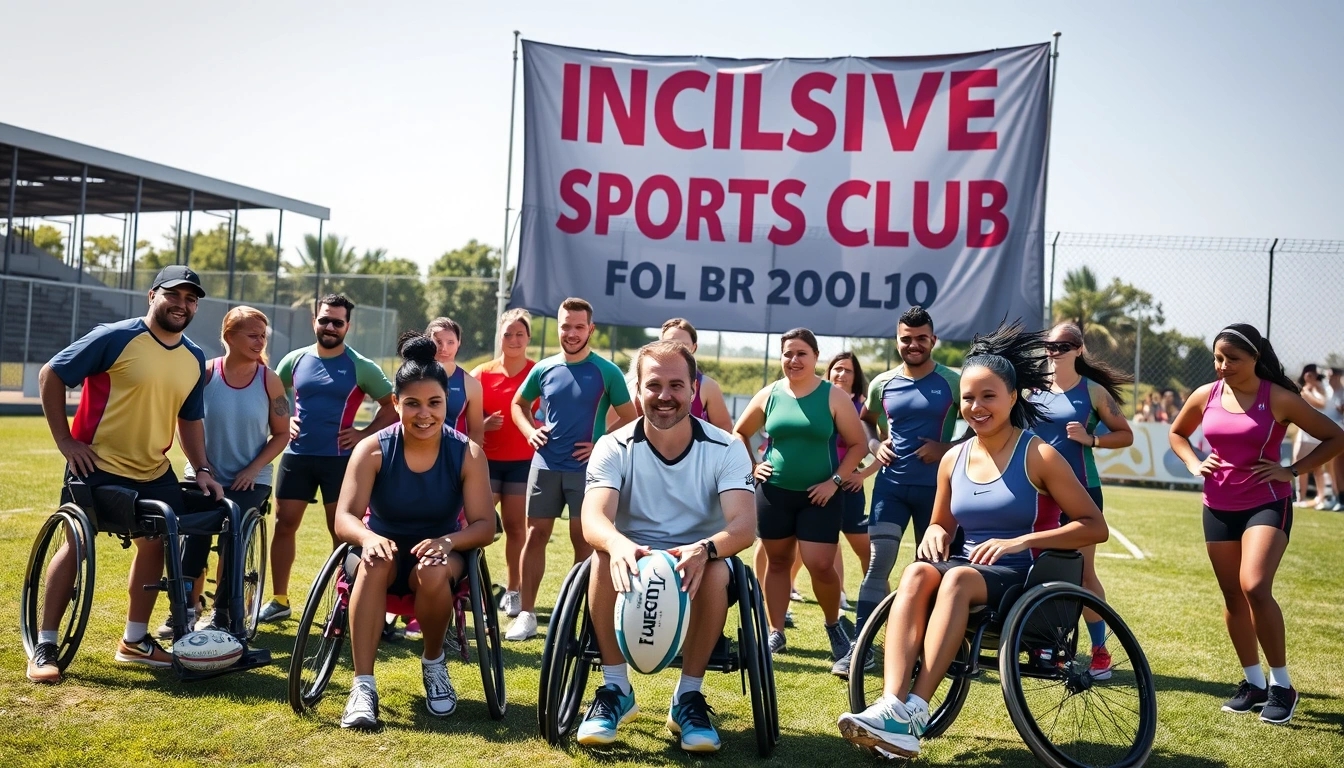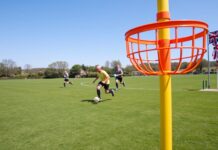Alright, let’s dive into the vibrant world of inclusive sports clubs across the UK — where the game isn’t just about scoring goals or winning medals, but about making sure everyone, and I mean everyone, feels welcome. Whether you’re a seasoned athlete, someone with a disability, or just someone who’s tired of the usual “locker room” vibes, these clubs are breaking the mold. They’re not just about sport; they’re about community, diversity, and a little bit of that good old British grit.
Now, what exactly makes a sports club truly inclusive? Well, it’s not just slapping a rainbow flag on the door and calling it a day. It’s about accessibility (think ramps, adaptive equipment), cultural sensitivity (no “one size fits all” coaching styles here), and a genuine commitment from coaches and staff to support every player’s unique journey. You’ll find clubs offering tailored training sessions, safe spaces for LGBTQ+ athletes, and programs that actively reach out to underrepresented communities. It’s a whole vibe.
| Key Elements of Inclusive Sports Clubs | Description |
|---|---|
| Accessibility | Physical access, adaptive gear, flexible scheduling |
| Cultural Sensitivity | Respecting diverse backgrounds and identities |
| Supportive Coaching | Training that adapts to individual needs and abilities |
| Community Engagement | Outreach programs and social inclusion activities |
Football, the UK’s beloved sport, has seen some remarkable strides. Clubs like Stonewall FC and Rainbow Rovers aren’t just playing matches; they’re rewriting the rulebook on diversity. These clubs actively welcome players from all walks of life, including those from minority ethnic backgrounds, the LGBTQ+ community, and people with disabilities. The atmosphere? Let’s just say it’s less about “winning at all costs” and more about “winning together.”
- Stonewall FC: Known for championing LGBTQ+ inclusion in football.
- Rainbow Rovers: Celebrates multiculturalism and community spirit.
- Inclusive United: Offers adaptive football sessions for players with disabilities.
Adaptive sports programs are also gaining momentum, with clubs pioneering innovative approaches. Take Wheelchair Warriors Rugby Club — a shining example of how rugby can be accessible to athletes with mobility impairments. Their sessions combine intense physical activity with adaptive techniques, making sure no one’s left on the sidelines. It’s inspiring to see how technology, like specialized wheelchairs and virtual coaching tools, is leveling the playing field.
Speaking of breaking barriers, women-led sports clubs are shaking things up. Clubs like SheScores FC and Women’s Wave Basketball are not only encouraging more women to lace up their boots and hit the court but also fostering leadership roles for women in coaching and management. It’s about flipping the script in a traditionally male-dominated space.
Community Impact Beyond the Game:- Social cohesion: Bringing diverse groups together- Mental health: Providing support networks and physical activity- Development: Offering skills and opportunities beyond sports
But hey, it’s not all sunshine and rainbows. Inclusive clubs often face uphill battles — funding is tight, stereotypes linger, and sometimes awareness is just not there. Yet, their resilience is what keeps them ticking, proving that sport can be a powerful catalyst for change.
So, if you’re on the lookout for an inclusive club that fits your vibe, start by checking local community centers, social media groups, or national organizations like Inclusive Sport UK. Volunteering is another fantastic way to get involved — you don’t need to be an athlete to make a difference.
In the end, the future of inclusive sports in the UK looks bright, messy, and wonderfully unpredictable — just like the game itself.
What makes a sports club truly inclusive?
When we talk about inclusivity in sports clubs, it’s not just some buzzword tossed around at meetings or on fancy websites. It’s the real deal — a mix of practical actions, attitudes, and values that create a space where everyone, and I mean everyone, feels they belong. But what exactly does that look like? Let’s unpack it, layer by layer, because it’s way more than just slapping a ramp on the entrance or sticking up a rainbow flag.
- Accessibility: This one’s the obvious starting point. If your club’s facilities are a nightmare for someone in a wheelchair or have zero adaptations for people with sensory impairments, then you’re already missing the mark. Accessibility isn’t just physical, it’s digital too — think websites, booking systems, and communication methods that everyone can use without needing a PhD in tech.
- Cultural Sensitivity: Sports clubs are melting pots of backgrounds, beliefs, and traditions. A truly inclusive club respects and celebrates this diversity. That means being mindful of dietary restrictions, religious observances, and even the way you design your kits or schedules. It’s about asking, listening, and adapting rather than assuming everyone fits one mold.
- Supportive Coaching: Coaches aren’t just there to shout instructions or drill skills. They’re mentors, motivators, and sometimes therapists. Inclusive coaching means understanding different learning styles, being patient with varied abilities, and fostering an environment where mistakes are part of the journey, not a reason to bench someone.
Now, don’t get me wrong — ticking these boxes is easier said than done. Some clubs try, but fall flat because inclusivity isn’t a checklist, it’s a mindset. It’s about creating a culture where diversity isn’t just tolerated but actively embraced and where every athlete feels safe to be their authentic selves.
| Element | What It Means | Why It Matters |
|---|---|---|
| Physical Accessibility | Facilities and equipment adapted for all abilities | Ensures no one is excluded due to mobility or sensory challenges |
| Cultural Awareness | Respect for diverse backgrounds and traditions | Builds trust and a welcoming atmosphere for everyone |
| Inclusive Coaching | Flexible teaching methods and emotional support | Helps athletes develop confidence and skills at their own pace |
| Community Engagement | Active efforts to involve diverse groups | Strengthens social bonds and club identity |
Also, let’s not forget the nitty-gritty stuff that often gets overlooked: language. The words coaches and club leaders use can either build someone up or tear them down. Inclusive clubs watch their language like hawks — no room for jargon that alienates, no tolerance for stereotypes or offhand comments. It’s a continuous effort, not a “set it and forget it” deal.
- Ongoing Education: Clubs that are serious about inclusion invest in regular training for staff and players alike. This helps everyone stay aware of unconscious biases and equips them with tools to handle tricky situations.
- Feedback Culture: Inclusivity thrives when clubs encourage honest feedback from their members — even when it’s uncomfortable. It’s about listening and evolving, not just patting yourselves on the back for good intentions.
In short, a truly inclusive sports club is like a well-oiled machine with empathy at its core. It’s a place where differences aren’t just accepted but celebrated, where barriers are dismantled, and where the love of the game unites everyone. And if your club isn’t there yet? Well, the good news is it’s a journey, not a destination. Keep pushing, keep learning, and keep welcoming — because that’s what inclusivity really means.
Top inclusive football clubs to watch
Alright, let’s dive into the heart of UK football where inclusivity isn’t just a buzzword but an actual game-changer. Football clubs across the country have been stepping up their game, not just on the pitch but off it too, creating spaces where everyone feels they belong — no matter their background, ability, or identity. It’s not all sunshine and rainbows, but some clubs are genuinely making strides that deserve a shoutout.
First up, Forest Green Rovers, often dubbed the world’s greenest football club, is also championing inclusivity like a boss. Beyond their eco-friendly policies, they’ve launched programs welcoming players from diverse ethnicities, LGBTQ+ communities, and those with disabilities. Their community outreach is something other clubs could learn from — it’s not just about signing players but about nurturing a culture where differences are celebrated.
| Club | Key Inclusivity Initiatives | Community Impact |
|---|---|---|
| Forest Green Rovers | LGBTQ+ support groups, disability-friendly training sessions, ethnic diversity campaigns | Raised awareness on sustainability & diversity, increased local youth participation |
| Brighton & Hove Albion | Equality workshops, mental health support, multilingual outreach programs | Enhanced community cohesion, reduced stigma around mental health |
| Charlton Athletic | Refugee integration programs, women’s football development, anti-racism campaigns | Empowered marginalized groups, promoted equality in grassroots football |
Now, Brighton & Hove Albion deserves a mention because they’ve been quite vocal and active in smashing stereotypes. Their equality workshops and mental health initiatives have created an environment where players and fans alike feel safe to be themselves. Plus, their multilingual outreach is a clever way to connect with the diverse local community — not everyone speaks English as their first language, and they get that.
Charlton Athletic, on the other hand, has been quietly doing some solid work with refugees and asylum seekers, helping integrate them through football. It’s a bit of a lifeline for many who may otherwise feel isolated. They also push hard on women’s football, which, let’s be honest, is still fighting for equal footing in many places. Their anti-racism campaigns? Necessary as ever in today’s world.
- Why does inclusivity matter? Because football is for everyone. Period.
- What’s the impact? Better mental health, stronger communities, and a more vibrant sport.
- Challenges? Funding, resistance from traditionalists, and sometimes just plain old inertia.
It’s not all perfect though. Some clubs talk a big game but don’t back it up with action. It’s easy to slap on a rainbow flag or run a one-off event, but meaningful change requires ongoing commitment. The best inclusive clubs are those that embed diversity into their DNA — from boardrooms to the pitch.
Tips for players seeking inclusive clubs:- Look beyond the first impression; check their community programs.- Ask about accessibility: Are facilities wheelchair friendly? Are coaches trained for diverse needs?- See if the club has active support groups or partnerships with local organizations.
To wrap up, the UK’s inclusive football scene is growing, but it’s a patchwork rather than a seamless quilt. Clubs like Forest Green Rovers, Brighton & Hove Albion, and Charlton Athletic show what’s possible when inclusivity is prioritized. Hopefully, their examples inspire others to follow suit — because football should be a game where everyone gets a kick.
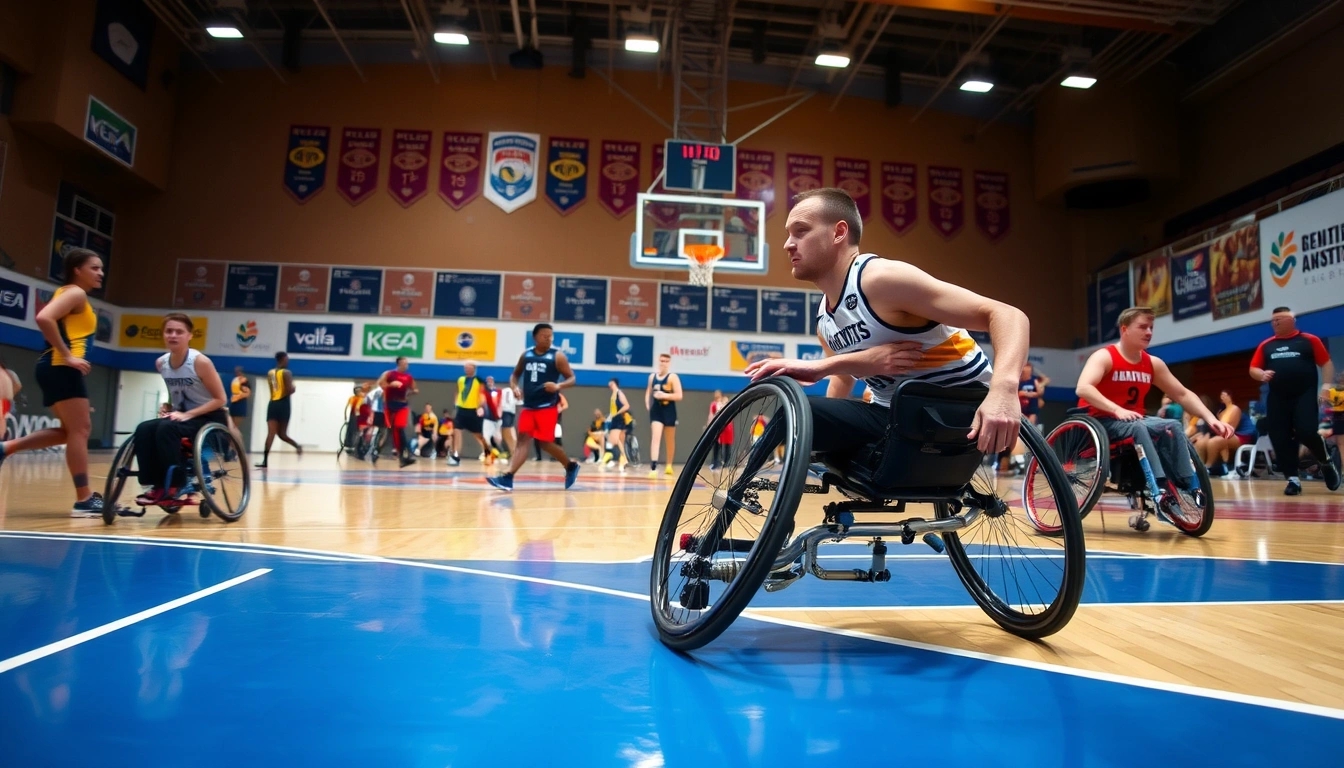
Adaptive sports programs gaining momentum
You know, it’s pretty amazing how adaptive sports have really started to shake things up lately. These initiatives, tailored for athletes with disabilities, are not just about participation anymore—they’re about innovation, community, and smashing stereotypes. It’s like the sporting world finally woke up and realized, “Hey, everyone deserves a shot at glory, no matter what.” From wheelchair basketball courts buzzing with energy to swimming pools echoing with cheers for para-athletes, adaptive sports are carving out their own spotlight. And honestly, it’s about time.
Let’s talk about some of the cool stuff happening on the ground. Clubs and organizations across the UK have been pioneering fresh approaches that make adaptive sports more accessible and fun. Take the London Titans, for example. This club has developed a hybrid training system combining traditional coaching with tech-driven adaptive equipment. Imagine sensors that adjust wheelchair speed based on terrain or smart prosthetics tailored for sprinting—yeah, they’re pulling that off. It’s not just about making sports possible; it’s about making them competitive and thrilling.
- Innovative Coaching: Coaches trained specifically in adaptive techniques, understanding the unique needs of each athlete.
- Equipment Customization: Clubs investing in bespoke gear, from modified bikes to adaptive rowing shells.
- Community Engagement: Programs that bring together disabled and able-bodied athletes, fostering mutual respect and teamwork.
Of course, standout clubs deserve a shoutout. The Brighton Adaptive Sports Centre has been a game-changer, offering everything from wheelchair rugby to adaptive cycling. Their approach? Focus on fun first, competition second. That’s a refreshing twist because sometimes, sports get too serious, and people forget it’s about joy and connection. Meanwhile, the Manchester Inclusive Athletics Club is breaking barriers with their “Train Together” initiative, pairing disabled athletes with able-bodied partners for joint training sessions. It’s an experiment in empathy and performance, and guess what? It’s working.
| Club Name | Key Initiative | Unique Feature |
|---|---|---|
| London Titans | Tech-driven adaptive training | Smart prosthetics and sensor-based wheelchairs |
| Brighton Adaptive Sports Centre | Inclusive multi-sport programs | Emphasis on fun and community |
| Manchester Inclusive Athletics Club | “Train Together” program | Pairing disabled and able-bodied athletes |
But hey, it’s not all sunshine and rainbows. Funding remains a headache for many clubs. Adaptive equipment isn’t cheap, and grants can be as elusive as a perfect penalty kick. Plus, there’s the ongoing battle against outdated perceptions—some folks still think adaptive sports are “lesser” or just for rehabilitation. Spoiler alert: that’s rubbish. These athletes train hard, compete fiercely, and inspire heaps.
If you’re wondering how to get involved or support these programs, here’s a quick rundown:
- Volunteer at local adaptive sports clubs—help is always needed, from coaching to event organization.
- Donate or fundraise for equipment purchases—every penny counts.
- Spread the word—awareness boosts participation and funding.
- Try adaptive sports yourself! Many clubs offer taster sessions for beginners.
In the end, adaptive sports programs aren’t just gaining momentum—they’re rewriting the playbook on what sports can be. They remind us all that ability is diverse, and passion is universal. So next time you see a wheelchair rugby match or a para-swimming heat, don’t just watch—cheer like mad. Because these athletes are not just playing; they’re pioneering the future of sport.
Women-led clubs breaking barriers
When it comes to shaking up the sports scene in the UK, female-led sports organizations are not just participating—they’re rewriting the whole playbook. These clubs are doing more than just encouraging women to lace up their boots or grab their rackets; they’re creating environments where women feel empowered, visible, and valued. And honestly, it’s about time. For decades, sports have been a boys’ club, but now, women at the helm are proving that leadership, passion, and inclusivity go hand in hand.
Take, for example, SheRocks FC, a football club run entirely by women, from coaches to managers. They’ve been turning heads by offering tailored training sessions that consider the unique needs of female athletes, from menstrual cycle-friendly scheduling to mental health support. It’s not just lip service; they walk the talk. The club’s membership has soared by 40% in the last two years, and their community outreach programs are inspiring girls as young as six to dream big.
| Club Name | Focus Area | Unique Initiatives | Impact |
|---|---|---|---|
| SheRocks FC | Women’s Football | Cycle-conscious training, mental health workshops | 40% membership increase, youth outreach |
| TrailBlaze Runners | Women’s Running | Inclusive trail runs, mentorship programs | Empowered over 300 women in 2 years |
| Volley Queens | Women’s Volleyball | Skill clinics, leadership development | Produced national-level players |
But it’s not all smooth sailing. These women-led clubs often face the classic hurdles—funding struggles, lack of media coverage, and, let’s be honest, some lingering sexism. Yet, they persist. They’re finding creative ways to fundraise, from quirky bake sales to online crowdfunding campaigns, and using social media like a megaphone to shout their successes from the rooftops.
- Community First: Many clubs prioritize building a supportive community, making sure every member feels like they belong.
- Flexible Scheduling: Recognizing that women juggle a ton, clubs offer flexible training times.
- Holistic Approach: Coaching isn’t just about the game; it includes mental health, nutrition, and leadership training.
One standout example is TrailBlaze Runners, a women-led running club that’s all about smashing stereotypes. Their inclusive trail runs welcome runners of all abilities, with mentorship programs pairing newbies with seasoned athletes. The vibe? Equal parts sweat, laughter, and serious girl power. They’ve empowered over 300 women in just two years, proving that leadership rooted in empathy and community can move mountains—or at least a few hills.
Now, before you think this is all sunshine and roses, let’s be real: breaking barriers is messy. There are setbacks, doubts, and moments when the old guard tries to push back. But that’s what makes these clubs so inspiring. They’re not waiting for permission; they’re making waves and inviting others to jump in.
Practical Tips for Supporting Women-Led Sports Clubs:- Volunteer your time or skills (coaching, admin, social media)- Attend games and events to boost visibility- Donate or help with fundraising efforts- Share their stories on social media to amplify their reach- Advocate for equal coverage in local media outlets
In the grand scheme, these women-led clubs are more than just sports teams—they’re movements. They’re proving that when women lead, the whole sporting world benefits. So next time you hear about a “women’s only” club, don’t brush it off. These spaces are where the future of sports is being forged, one bold, barrier-breaking step at a time.
Community impact: Beyond the game
When you think about sports clubs, your mind probably jumps straight to the pitch, court, or track — the sweat, the cheers, the thrill of competition. But here’s the kicker: inclusive sports clubs in the UK are doing way more than just organizing games. They’re quietly, yet powerfully, knitting together communities, boosting mental health, and fostering social cohesion in ways that often fly under the radar. It’s not all about the scoreboard; sometimes the real win happens off the field.
Let’s get real for a moment. Inclusive clubs open their doors to everyone — regardless of age, ability, gender identity, or background. This diversity isn’t just a box to tick; it’s the secret sauce that builds a sense of belonging. When people from different walks of life come together, it creates a melting pot of experiences and perspectives. It’s like a mini United Nations but with sweatbands and trainers. This mix encourages empathy and understanding, breaking down stereotypes and social barriers that might otherwise keep people apart.
- Social cohesion: Inclusive clubs act as community hubs where friendships blossom beyond the game. They’re places where neighbors who might never have met get to know each other, share stories, and support one another.
- Mental health benefits: Physical activity is a known mood booster, but the social interaction in these clubs adds an extra layer of protection against loneliness and depression.
- Community development: Many clubs engage in outreach programs, workshops, and events that uplift local areas, creating a ripple effect of positivity.
| Area | Impact | Example |
|---|---|---|
| Social Cohesion | Bridging cultural and social divides | Multi-ethnic football leagues in London |
| Mental Health | Reducing isolation and improving wellbeing | Weekly community yoga sessions |
| Community Development | Creating safe spaces and opportunities | Local wheelchair basketball initiatives |
Now, you might wonder, is it all sunshine and rainbows? Nah, of course not. These clubs often wrestle with limited funding, a lack of visibility, and sometimes resistance from traditional sports circles stuck in their old ways. But the grit and passion of those involved keep the wheels turning. And honestly, that’s part of what makes their impact so genuine and inspiring.
Here’s a little nugget for you: many participants report that joining an inclusive club gave them a fresh start — a place where they felt valued and understood, not judged. That kind of environment can be life-changing, especially for folks who’ve faced exclusion elsewhere.
“Before joining, I felt invisible. Now, I’m part of a team that cheers for me, not despite my differences, but because of them.” – Sarah, 28, member of an inclusive rugby club
To wrap it up, inclusive sports clubs are way more than just places to play. They’re vital engines driving social change, mental wellness, and community spirit. So next time you hear about an inclusive club, remember — they’re scoring goals off the pitch too, and those wins might just be the most important ones.
Practical insight: If you’re looking to get involved, whether as a player, volunteer, or supporter, start by checking local community centers or national organizations focused on inclusive sports. You’ll be surprised at how many opportunities there are to make a difference beyond just kicking a ball around.
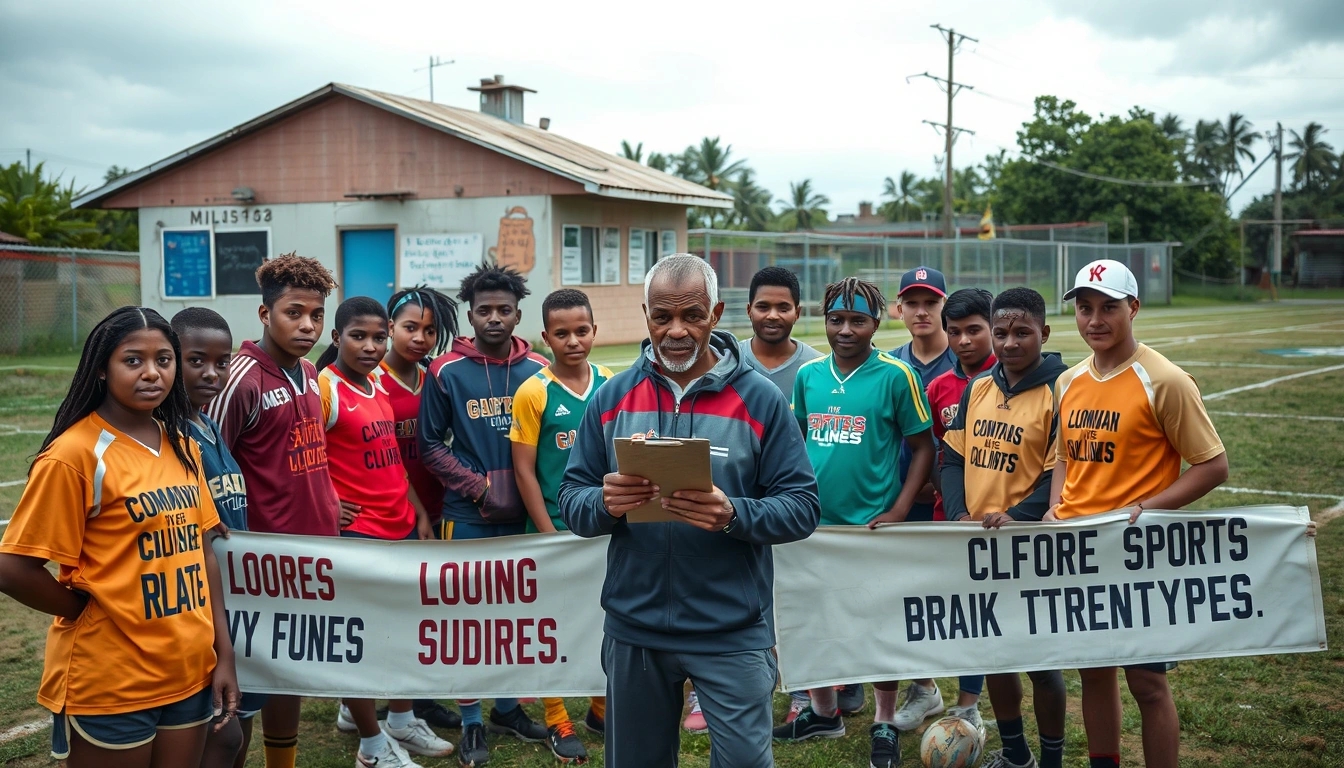
Challenges faced by inclusive clubs
Inclusive sports clubs, despite their noble intentions and vibrant communities, often find themselves battling a range of obstacles that can make their journey anything but smooth. It’s not all sunshine and rainbows when you’re trying to create a space where everyone feels welcome, regardless of ability, background, or identity. Let’s dive into some of the most persistent hurdles these clubs face and why overcoming them is no walk in the park.
Funding Woes: The Never-Ending Struggle
Money, or the lack thereof, is probably the biggest headache for inclusive clubs. Unlike mainstream sports organizations that might have lucrative sponsorship deals or ticket sales, inclusive clubs often rely on limited grants, donations, or community fundraising. This financial pinch affects everything—from purchasing adaptive equipment to hiring trained coaches who understand the nuances of inclusivity.
| Funding Challenges | Impact on Inclusive Clubs |
|---|---|
| Limited sponsorship opportunities | Difficulty sustaining long-term programs |
| High cost of adaptive equipment | Restricts participation for athletes with disabilities |
| Inadequate staffing budgets | Limits quality coaching and support |
Raising Awareness: The Invisible Barrier
Another tricky nut to crack is simply getting the word out. Many inclusive clubs struggle with visibility. They’re often overshadowed by traditional sports clubs that have bigger marketing budgets and more media attention. This lack of awareness means fewer participants, less community support, and a harder time attracting volunteers or donors.
- Potential athletes may not know these clubs exist.
- Communities might misunderstand the club’s mission or scope.
- Local authorities may overlook funding or support opportunities.
Fighting Stereotypes: The Stubborn Old Guard
Let’s be real—sports have a long history of exclusivity and stereotypes. Inclusive clubs often find themselves up against traditional mindsets that question whether “everyone” can really compete or belong. This skepticism can manifest in subtle ways, like exclusion from leagues, or more overtly through negative attitudes from other players, officials, or even families.
Common stereotypes faced by inclusive clubs:- "Sports are only for the able-bodied."- "Competitive sports don’t work with mixed abilities."- "Women or minorities aren’t as interested or capable."
These outdated beliefs don’t just hurt morale; they can block access to facilities, funding, and partnerships. Changing hearts and minds takes time—and a lot of patience.
Practical Insights: What Can Help?
- Collaborative partnerships: Working with local councils, schools, and health services can open doors to resources and raise visibility.
- Community-driven fundraising: Events like charity matches, bake sales, or crowdfunding campaigns can ease financial pressures.
- Education campaigns: Hosting workshops or social media drives to bust myths and showcase success stories.
In the end, inclusive clubs are often powered by passion and resilience more than cash or clout. They’re rewriting the rules, one awkward stumble and triumphant goal at a time. Sure, the road is bumpy, but the destination—a sporting world where everyone belongs—is worth every challenge.
Role of technology in inclusivity
When you think about sports and technology, your mind might jump straight to flashy gadgets or high-tech wearables used by elite athletes. But hold on a minute—there’s a whole other side of tech making waves, one that’s quietly revolutionizing how inclusive sports can be. From adaptive gear to virtual coaching, technology is tearing down barriers that once seemed immovable. And honestly, it’s about time.
Take adaptive equipment, for instance. It’s not just about slapping on a prosthetic limb and calling it a day. We’re talking about highly specialized gear tailored to individual needs. Wheelchairs designed for basketball with shock absorbers and lightweight frames, or customized hearing aids synced with communication devices on the field. These innovations don’t just help athletes participate—they empower them to compete on their own terms.
| Adaptive Equipment | Purpose | Impact |
|---|---|---|
| Sport-specific prosthetics | Enhanced mobility and performance | Level playing field for amputee athletes |
| Smart wheelchairs | Improved maneuverability and control | Greater independence in wheelchair sports |
| Hearing aid tech | Real-time communication | Better team coordination |
Now, let’s chat about virtual coaching platforms. These aren’t just for the pros grinding away to perfect their free kicks or slam dunks. Virtual coaching is opening doors for people who might have otherwise been sidelined—whether that’s because of geographic isolation, physical limitations, or even social anxiety. Imagine accessing personalized training sessions from your living room, with coaches who understand your unique challenges. No more excuses about “not having a coach nearby” or “not fitting in” at local clubs.
- Virtual reality (VR) training: Immersive environments simulate real-game scenarios, helping athletes with disabilities practice skills safely.
- AI-driven feedback: Instant analysis on technique and form, tailored for individual progress.
- Online communities: Spaces where athletes can share experiences, advice, and encouragement.
But hey, technology isn’t flawless. There’s still a long way to go to make sure these tools are affordable and accessible to everyone. Plus, some folks might feel overwhelmed by all the tech jargon or simply prefer the human touch. Still, the progress is undeniable.
Tech Challenges in Inclusive Sports:- High cost limits widespread adoption- Digital literacy gaps among users- Risk of over-reliance on gadgets vs. human coaching- Need for ongoing customization and updates
To wrap it up, technology is no magic wand, but it’s definitely a game-changer in making sports more inclusive. It’s breaking down walls, creating new opportunities, and giving athletes of all abilities a louder voice on the field. So next time you see a player with a sleek prosthetic or someone training with VR goggles, remember—it’s not just cool tech, it’s a statement: sports belong to everyone.
Practical tip: If you’re part of an inclusive club or thinking of joining one, ask about the tech tools they use. Sometimes, just knowing what’s out there can open up a whole new world of possibilities.
Youth programs fostering diversity early on
When it comes to shaping the future of sports, starting young is the name of the game. Across the UK, a growing number of youth initiatives are stepping up to the plate, aiming to embed inclusivity and diversity into the very fabric of sports culture from the grassroots level. These programs aren’t just about teaching kids how to kick a ball or run a race; they’re about cultivating respect, understanding, and a genuine appreciation for differences—whether that’s ability, background, gender, or ethnicity. And honestly, it’s about time!
What’s refreshing is how these youth initiatives don’t shy away from the messy bits of inclusivity. Instead of glossing over challenges, they confront them head-on. For example, many clubs now actively recruit coaches trained in cultural sensitivity and adaptive sports techniques, ensuring every child feels seen and supported. It’s not just lip service. These programs often partner with local schools and community groups to reach kids who might otherwise be sidelined or overlooked.
- Multicultural Sports Days: Events where kids from various backgrounds come together to play, learn, and celebrate differences.
- Adaptive Sports Workshops: Designed for children with disabilities to experience sports tailored to their needs.
- Peer Mentoring Schemes: Older youth leaders from diverse backgrounds guide younger players, fostering role models and a sense of belonging.
Sure, it’s not all sunshine and rainbows. Some programs struggle with funding, others with reaching the kids who need them most. But the passion from coaches, parents, and the kids themselves keeps these initiatives alive and kicking. One thing’s for sure: they’re planting seeds for a more inclusive sporting world, one game at a time.
| Feature | Description | Impact |
|---|---|---|
| Accessibility | Ensuring facilities and equipment cater to all abilities | More participation from children with disabilities |
| Cultural Representation | Incorporating diverse cultural practices and languages | Kids feel respected and understood |
| Inclusive Coaching | Training coaches in empathy and adaptive methods | Better player retention and enjoyment |
| Community Engagement | Partnering with local groups and families | Stronger support networks for young athletes |
And here’s a little insider scoop: some of the most exciting youth programs are blending tech with tradition. Virtual reality training sessions help kids with physical limitations practice skills in a safe space, while apps connect families to clubs, making sign-ups and communication easier. It’s a bit of a wild mix, but hey, if it gets more kids involved and feeling welcome, who’s complaining?
Tips for Parents and Coaches:- Encourage kids to try different sports, not just the popular ones.- Celebrate small wins, especially when kids overcome personal or social barriers.- Listen to the kids’ voices—they often know what makes them feel included or left out.- Keep learning! Inclusivity isn’t a box to tick, it’s an ongoing journey.
At the end of the day, youth programs fostering diversity early on are about more than just sports. They’re about building empathy, breaking down stereotypes, and creating communities where every child can thrive. It might be a slow grind, but the payoff? A generation that truly values inclusion—not just on the field, but everywhere life takes them.
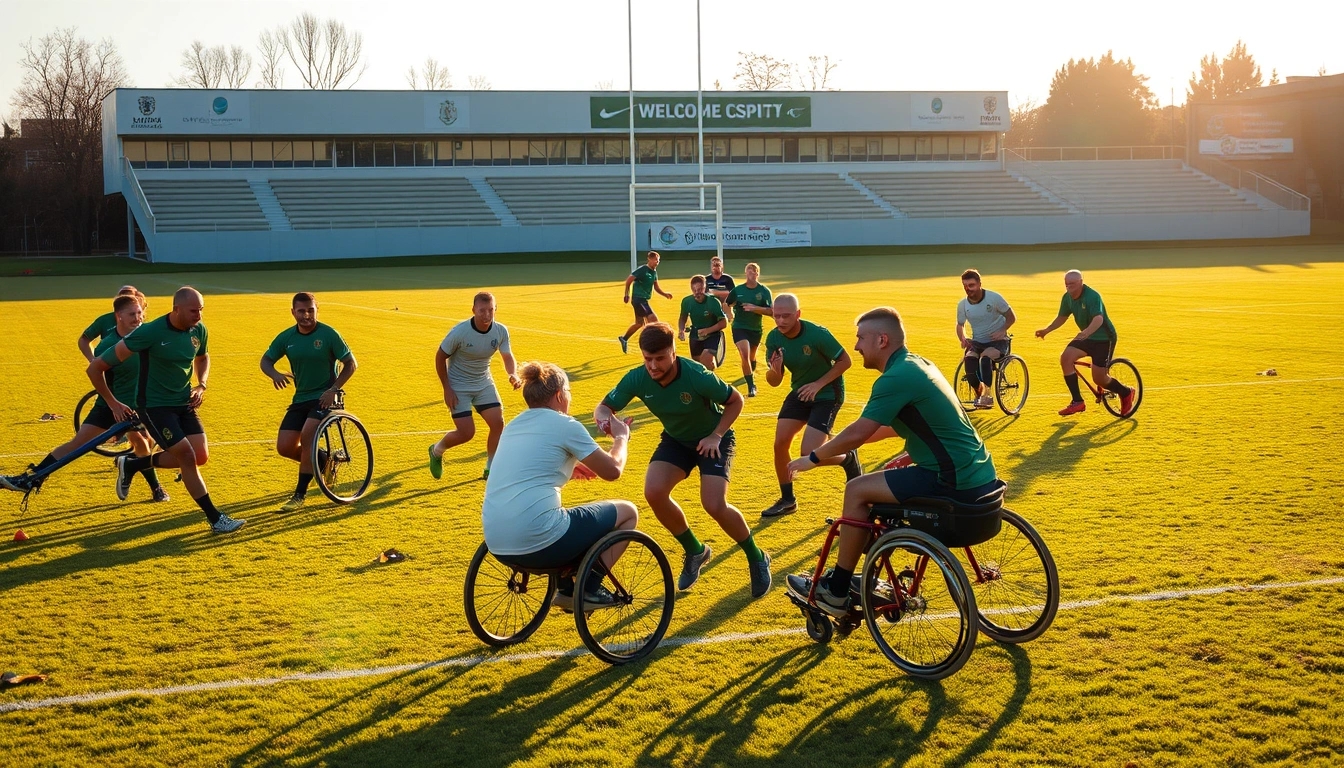
Case study: A day at an inclusive rugby club
Step inside the buzzing world of an inclusive rugby club, and you’ll quickly realize it’s not your typical sports venue. This place is a melting pot of talents, ages, and backgrounds, where the usual rugby roughness gets a fresh twist of warmth and acceptance. The club’s ethos? Everyone’s got a spot on the pitch — no exceptions, no awkward sidelines. From the moment you walk in, you’re hit with a sense of community that’s as strong as a scrum.
The day kicks off with a warm-up session that’s anything but standard. Coaches, who double as mentors and cheerleaders, tailor exercises to fit every player’s unique abilities. Whether it’s a seasoned player with a disability or a newbie still figuring out which way to run, the drills adapt to make sure no one feels left behind. It’s a bit chaotic, sure — but that’s part of the charm. You’ll hear laughter, encouragement, and the occasional playful heckle flying across the field.
| Time | Activity | Purpose |
|---|---|---|
| 9:00 AM | Inclusive Warm-up | Engage all players, build confidence |
| 10:00 AM | Skill Drills | Develop individual strengths |
| 11:00 AM | Mixed Ability Match | Foster teamwork and understanding |
| 12:30 PM | Community Lunch | Strengthen social bonds |
One of the standout moments is the mixed ability match. Forget the usual competitive frenzy — this game is about collaboration. Players with varying skill sets and physical abilities pass, tackle, and strategize together, often improvising on the fly. It’s messy, unpredictable, and honestly, a bit heartwarming to watch. The scoreboard? Almost irrelevant. What matters is the camaraderie and the shared grin after a well-executed play.
- Inclusivity in action: Coaches encourage players to lead drills, fostering leadership regardless of experience.
- Adaptive equipment: From lighter balls to modified tackle pads, gear is chosen to suit everyone.
- Open dialogue: Regular check-ins help players voice concerns or suggest improvements, making the club a living, breathing entity.
After the game, the vibe shifts to social. The community lunch is more than just refueling; it’s a chance for stories, jokes, and sometimes heated debates about last week’s match. Parents, volunteers, and players of all ages gather around tables, sharing food and laughter. This informal setting strengthens the club’s backbone — a genuine sense of belonging.
But it’s not all sunshine and rainbows. Running such an inclusive club demands constant juggling. Funding is a perpetual headache, and convincing traditionalists that inclusivity doesn’t dilute competitiveness can be exhausting. Yet, the club’s leadership remains undeterred, fueled by the visible impact on players’ confidence and social skills.
“Some days, you wonder if you’re making a dent. Then you see a shy kid score a try or a player with a disability high-five a teammate — that’s when you know it’s worth every challenge.”
In the end, this rugby club isn’t just about the sport. It’s a living example of how inclusivity and community spirit can redefine a game known for its toughness. It’s messy, imperfect, and utterly human — just like rugby itself should be.
How to find the right inclusive club for you
So, you’re on the hunt for an inclusive sports club that actually *gets* you — whether you’re an athlete with a disability, someone from a minority background, or just a person who’s tired of the usual “one-size-fits-all” sports scene. Good news: you’re not alone, and there are plenty of clubs out there trying to shake things up. But, let’s be honest, navigating the options can feel like trying to find a needle in a haystack… blindfolded. Here’s a down-to-earth guide to help you cut through the noise and find a spot that fits your vibe and needs.
Start with what matters most to you. Accessibility? Coaching style? Community spirit? Maybe you want a club that actively welcomes LGBTQ+ athletes or one that’s got adaptive sports programs. Jot down your top priorities before diving in. This way, you won’t get dazzled by shiny websites but empty promises.
| Priority | Questions to Ask |
|---|---|
| Accessibility | Are facilities wheelchair-friendly? Is transport easy? |
| Coaching | Do coaches have training in inclusive methods? |
| Community | Is there a welcoming atmosphere? Are diverse identities respected? |
| Programs | Are there adaptive or specialized sessions? |
Next up, do your homework online. Most clubs nowadays have websites or social media pages, but beware: a flashy Insta feed doesn’t always equal inclusivity. Look for testimonials, photos showing diverse participants, or mentions of partnerships with disability organizations or cultural groups. Don’t hesitate to reach out directly — a quick call or email asking about their inclusivity policies can save you heaps of time.
- Tip: Join local online forums or Facebook groups dedicated to inclusive sports. Real talk from other athletes and families can give you the unfiltered scoop.
- Tip: Check if the club is affiliated with national bodies promoting inclusivity—like the English Federation of Disability Sport or Stonewall Sports.
Now, here’s where things get a bit tricky — visiting the club in person. Nothing beats a face-to-face feel. Schedule a visit or attend a trial session. Pay attention to how welcoming the staff are, how the players interact, and whether the environment feels safe and supportive. Don’t be shy to ask about their policies on bullying, discrimination, or how they accommodate different needs.
Sample Questions for Your Visit:- How do you support athletes with different abilities?- What training do your coaches receive on inclusivity?- Can you share examples of how the club handled past challenges related to diversity?- Are families involved in club activities?
And hey, it’s okay if the first club you try isn’t “the one.” Finding the right fit can take time, and that’s perfectly normal. Keep an open mind but trust your gut—if something feels off, it probably is.
Lastly, don’t forget about local councils and sports charities. Many offer directories or support services to connect you with inclusive clubs. Sometimes the best gems are hidden in community centres or smaller towns, not just the big city names.
Quick checklist before signing up:
- Does the club reflect your identity and values?
- Are the facilities suitable for your needs?
- Is there a clear commitment to diversity and inclusion?
- Do you feel comfortable and excited to join?
Finding an inclusive sports club isn’t just about playing the game; it’s about joining a community where you can be yourself and thrive. So, take your time, ask the tough questions, and don’t settle for less than you deserve. The right club is out there — you just gotta find it.
Volunteering and supporting inclusive sports
When it comes to getting involved with inclusive sports clubs, there’s more than just showing up to cheer from the sidelines. These clubs thrive on community spirit and the hands-on support of passionate individuals. Whether you’re a die-hard sports fan, a weekend warrior, or someone who just wants to make a difference, there are plenty of meaningful ways to dive in.
Volunteering is the heartbeat of many inclusive sports clubs. Think about it: from helping coaches during training sessions to organizing events or managing equipment, volunteers keep the wheels turning. You don’t have to be a pro athlete or have loads of experience. Enthusiasm often counts for more than anything else. For example, helping an adaptive sports program might mean assisting athletes with disabilities, providing encouragement, or even just being a friendly face who keeps spirits high. It’s hands-on, often rewarding, and sometimes downright eye-opening.
- Coaching Assistance: Supporting coaches by running drills, setting up equipment, or offering one-on-one encouragement.
- Event Organization: Helping plan inclusive tournaments, fundraisers, or community outreach days.
- Administrative Support: Managing registrations, communications, or social media to keep the club connected and informed.
Now, if volunteering isn’t your cup of tea, don’t fret. Advocacy plays a huge role in pushing inclusive sports forward. This means speaking up about the importance of accessibility and diversity in sports, lobbying local councils for better facilities, or simply spreading the word on social media. You’d be surprised how a single tweet or Facebook post can spark conversations and attract new supporters.
| Support Method | What It Involves | Impact |
|---|---|---|
| Volunteering | Hands-on support during training, events, and day-to-day activities | Directly helps athletes and club operations |
| Advocacy | Raising awareness, lobbying for resources, promoting inclusivity online | Influences policy and public perception |
| Fundraising | Organizing or participating in campaigns, charity runs, and sponsorship drives | Secures vital funding for equipment, facilities, and programs |
Speaking of funding, fundraising is another crucial way to support inclusive sports clubs. These clubs often operate on shoestring budgets, so every penny counts. Hosting bake sales, charity matches, or crowdfunding campaigns might sound old-school, but they’re surprisingly effective. Plus, they bring the community together in a shared goal — and who doesn’t love a good fundraiser with some fun thrown in?
If you’re wondering where to start, many clubs welcome newcomers with open arms. Reach out, ask questions, and find out what they need most. You might find yourself coaching a youth team one day and running a social media campaign the next. The key is to be flexible, patient, and ready to learn.
In the end, supporting inclusive sports clubs isn’t just about the game. It’s about building a community where everyone feels valued and empowered. So, whether you’re rolling up your sleeves to volunteer, shouting from the rooftops for inclusivity, or rallying funds to keep the club alive, your contribution matters. And trust me, the feeling you get from being part of something bigger? Absolutely priceless.
Quick Tips to Get Started:
- Contact local inclusive sports clubs to ask about volunteer opportunities.
- Follow and share inclusive sports organizations on social media to boost awareness.
- Organize or join fundraising events to help clubs secure necessary resources.
- Attend club meetings or matches to understand their challenges and celebrate successes.
So, what’re you waiting for? Get involved, make a difference, and maybe even have a bit of fun along the way.
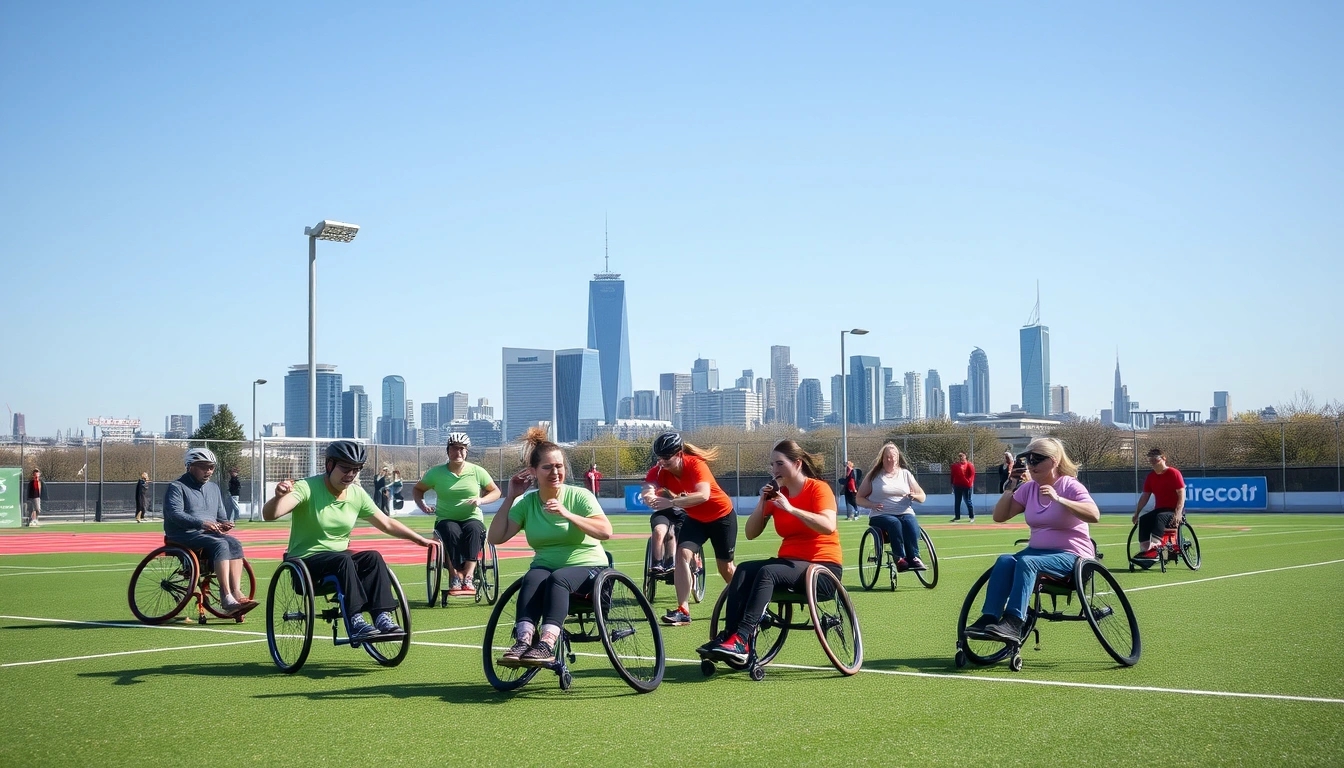
The future of inclusive sports in the UK
Alright, let’s dive into the ever-evolving world of inclusivity in UK sports clubs — a topic buzzing with hope, challenges, and a pinch of uncertainty. If you thought sports were just about the game, think again. Inclusivity is no longer a buzzword; it’s becoming the backbone of how clubs operate, thanks to a mix of policy nudges and cultural shifts that are shaking things up. But where exactly are we headed? Buckle up, because this ride isn’t exactly smooth or predictable.
First off, government policies are starting to flex their muscles more than ever before. The UK’s Sport England and other bodies have been pushing for equality in funding and access, aiming to break down barriers that have traditionally sidelined certain groups — whether that’s based on disability, gender, ethnicity, or socioeconomic status. The ripple effect? We’re seeing more clubs rethinking their infrastructure, coaching styles, and recruitment strategies.
- Accessibility upgrades: Clubs are investing in ramps, sensory rooms, and adaptive equipment.
- Training for coaches: Emphasis on cultural sensitivity and mental health awareness is becoming standard.
- Community outreach: Efforts to engage underrepresented groups are growing, though sometimes these campaigns feel like a work in progress.
But let’s not kid ourselves — policy is one thing, culture is another beast entirely. The UK’s sporting culture has long been steeped in tradition and, frankly, a bit of stubbornness. Yet, the younger generation is flipping the script. They’re more vocal about diversity and inclusion, demanding that clubs reflect the communities they serve. This pressure is forcing clubs to get creative — from hosting mixed-ability tournaments to launching women-led initiatives and LGBTQ+ friendly spaces.
Here’s a quick peek at some trends that might become the norm sooner than you think:
| Trend | Description | Potential Impact |
|---|---|---|
| Adaptive Tech Integration | Use of AI and wearable tech to customize training for athletes with disabilities. | Could revolutionize how inclusive training is delivered, making it more personalized. |
| Policy-Driven Funding | More targeted grants for clubs demonstrating clear inclusivity goals. | Financial support may finally match ambition, but only if clubs can prove their impact. |
| Grassroots Diversity Programs | Early engagement with kids from diverse backgrounds to foster inclusivity from the get-go. | Long-term cultural shifts, but requires patience and consistent effort. |
Still, it’s not all sunshine and rainbows. Clubs often struggle with limited budgets, resistance from some traditionalists, and the tricky task of balancing inclusivity without tokenism. For example, throwing a “diversity day” once a year is not the same as embedding inclusivity into daily club life — yet some places still get stuck at the former.
Practical Tips for Clubs Looking Ahead:- Engage with local communities consistently, not just during events.- Train coaches regularly on unconscious bias and adaptive techniques.- Invest in infrastructure that benefits all members, not just a select few.- Listen to athletes’ feedback and involve them in decision-making.
In the end, the future of inclusive sports in the UK hinges on a delicate dance between policy, culture, and genuine commitment. It’s messy, it’s complicated, and it’s not going to happen overnight — but the momentum is there, and that’s something to cheer about. So, whether you’re an athlete, coach, or just a fan, keep your eyes peeled and your mind open. The game is changing, one inclusive step at a time.
After all, sports should be for everyone — no exceptions.
Frequently Asked Questions (The title must be written in English.)
- What exactly makes a sports club inclusive?
Inclusivity in sports clubs goes beyond just welcoming everyone through the door. It means creating an environment where athletes of all abilities, backgrounds, and identities feel valued and supported. Think of it as a team where every player, regardless of skill or identity, has a seat at the table. This includes accessible facilities, culturally sensitive coaching, and a culture that celebrates diversity rather than just tolerates it.
- Are there specific clubs in the UK known for their inclusivity?
Absolutely! Several football clubs and adaptive sports programs have set the standard for inclusivity in the UK. These clubs actively promote diversity and have tailored programs for athletes with disabilities, women, and minority groups. They’re not just playing the game—they’re changing it by making sports accessible and welcoming to all.
- How do adaptive sports programs work for athletes with disabilities?
Adaptive sports programs are designed to modify traditional sports to meet the needs of athletes with disabilities. This could mean specialized equipment, rule adjustments, or tailored coaching techniques. Imagine turning a standard football game into a version that everyone can enjoy and compete in fairly—adaptive programs do just that, breaking down barriers and opening doors.
- Why are women-led sports clubs important?
Women-led clubs are shaking up the sports world by challenging stereotypes and creating spaces where women feel empowered to participate fully. They act as catalysts for change, encouraging more female athletes to join and thrive. It’s like having a strong captain steering the ship towards equality and opportunity for all genders.
- What challenges do inclusive sports clubs face?
Despite their positive impact, inclusive clubs often wrestle with funding shortages, limited public awareness, and ingrained stereotypes within traditional sports culture. These hurdles can feel like steep mountains to climb, but the clubs’ resilience and community support keep pushing the boundaries forward.
- How is technology enhancing inclusivity in sports?
Technology is a game-changer when it comes to inclusivity. From adaptive equipment that levels the playing field to virtual coaching platforms that reach remote athletes, tech innovations help break down physical and social barriers. It’s like giving every player a personalized toolkit to succeed, no matter their circumstances.
- How can I find an inclusive sports club that suits me or my family?
Finding the right inclusive club starts with knowing what you need—whether it’s accessibility features, coaching styles, or community vibe. Resources like local sports directories, online forums, and word-of-mouth recommendations are great starting points. Don’t hesitate to visit clubs, ask questions, and get a feel for the environment before committing.
- Can I volunteer or support inclusive sports clubs even if I’m not an athlete?
Definitely! Inclusive sports clubs thrive on community involvement. Whether it’s volunteering at events, fundraising, or simply spreading the word, your support can make a huge difference. Think of it as being part of a team off the field, helping to build a stronger, more inclusive sporting community.
- What does the future hold for inclusive sports in the UK?
The future looks bright, with growing awareness, policy changes, and cultural shifts driving inclusivity forward. We can expect more clubs adopting inclusive practices, advanced technology making sports accessible to all, and a stronger emphasis on diversity from grassroots to professional levels. It’s an exciting time where the playing field is truly leveling out.

